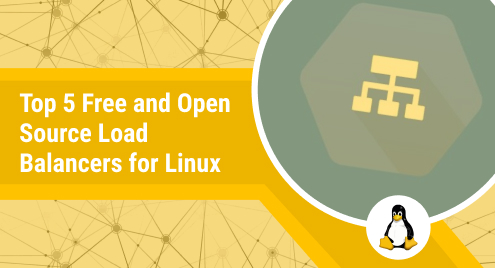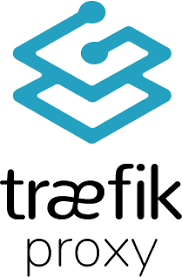
Top 5 Free and Open Source TCP-HTTP Load Balancers for Linux
If you have launched a software application that has gained high popularity among users, or applied a marketing strategy that has worked wonders for you, or simply, have developed software for a large audience then deploying a load balancer is a must. They aid the network administrators and managers to route the incoming load of traffic to the appropriate channels so that the users can smoothly use the software applications without any hitch. To ensure the effectiveness of the system, load balancer applications prevent the bottleneck by optimizing the traffic towards the specific configurations. The web that we are using and the smoothness that is being provided to the billions of users is because of load balancers. When the load is increased on a specific server then the application distributes the load either horizontally or vertically across the backend servers. Both of these have their pros and cons. Vertical scaling works by adding more hardware to handle the load of requests but that comes with a massive cost increase. Horizontal scaling works by handling the load by increasing the servers. Although, it is highly effective and cost-friendly but demands technical management.
In this article, we have listed the top 5 free and open-source load balancer applications that fit your needs to help you deal with the daunting task of managing the immense amount of users accessing you software application and ensuring that your system (or software application) sustains the load along with providing seamless user experience.
KEMP

If you require a heavy-duty, advanced, free, and open-source load balancer to deploy on the vast library of applications then Kemp loadmaster is the best solution which provides a secure and highly efficient delivery. The app uses round-robin or least connection algorithms for the layer 4 load balancing. Also, it provides layer 7 balancing. Other features that are made available to the end users are the integration of a web application firewall, intrusion prevention engine, multi-site global load balancing, content coaching, switching, and compressing, the persistence of web cookies, IPSec tunneling, Kubernetes, and pre-authentication. Some of the major brands have also incorporated KEMP in their systems that have popularized the app such as Apple, Sony, Audi, Hyundai, and JP Morgan. Premium application is also available but the features available on the free edition provide sufficient features.
HAproxy

A highly available, free, and open-source application that is considered among the most popular load balancers. Another reason that has made its usage popular is that app is used by Airbnb, Reddit, GitHub, and Imgur. Traffic from TCP and UDP is supported via Layer 4 and Layer 7 balancing. It supports UNIX socket and IPv6. Other features provided to users are health-check, session stickiness which is source-based, statistics reporting, and Gzip or Deflate compression. The community edition has plenty of features to offer but if your need exceeds those, then you can opt for the premium version. Many Linux distributions are already provided with HAproxy.
Get it now from https://www.icewalkers.com/linux/software/529110/HAProxy.html
NGINX

A tried and tested, free and open-source software, initially produced in 2004 and written in C has become one of the software which you can trust blindly for your load balancing requirements. It is a great all-in-one app for reverse and mail proxy, HTTP cache, and load balancing. The popularity of Nginx has increased its usage at OpenDNS, Cloudflare, and Adobe. Main support is provided to the HTTP, FastCGI, SCGI, uWSGI, HTTPS, gRPC, and Memcached backends through Layer 7. Other main features that are provided to the end users are automatic configuration, API gateways, content compressing, coaching and routing, and Gzipping. Nginx is undoubtedly an amazing, high-performing load balancer for a small-scale or an up-scale business that is capable of handling millions of requests per second.
Get it now from http://nginx.org/en/download.html
Traefik

Traefik is a fast, updated, and reliable Load balancer and HTTP reverse proxy which is built by incorporating GO. The software gained popularity when major business-like Amazon ECS, Rancher, Docker, and Kubernetes streamlined their services by using Traefik. Major features that are provided to end users are Auto SSL certificate renewal, web sockets, HTTP/2, REST API, and a clean user interface. It is designed specifically for distributed systems that are container powered and for the business providing microservices, such as Docker Swarm, Kubernetes orchestration, and Consul.
Get it now from https://doc.traefik.io/traefik/getting-started/install-traefik/
Go-between

It is a reverse proxy, layer 4 load balancer which is free and open source for its users. This software also focuses majorly on microservices and container-powered distributions. It can be easily launched in Linux, Windows, and Mac just by a single Binary and a JSON configuration file. REST API is utilized to give users a real-time management and monitoring system. IP hash, World-famous-round-robin, weight, least connection, and least bandwidth are the algorithms on which load balancing configuration is based. This software is made suitable for high-load systems by including high-geared TCP, UDP, and TLS. The software offers its users robust backend discovery by DNS SRV, custom script, consul, and Static File. For simple and flexible health monitoring, the software utilizes built-in TCP ping.
Get it now from https://gobetween.io/downloads.html
Closing Remarks
To ensure the effectiveness and productivity of your service, it is required that users have a smooth experience and face absolutely no glitches in the software application or worse, experience application crashes. To ensure such user experience, deploying load balancers us critical. Many factors affect selecting the right load balancer for your service, such as the algorithm used for the load balancers, such as IP hashing, randomized, and round-robin. Similarly, other crucial factors can be the support that is provided for the service meshes buildup, support provided for container networking, and information like metrics and traces. In this article, we have addressed all these factors and your possible key concerns in selecting the right load balancer for your software application. Additionally, all of the above-discussed software are free and open-source, so you can easily test, try, and select the load balancer application that best fits your requirements.

